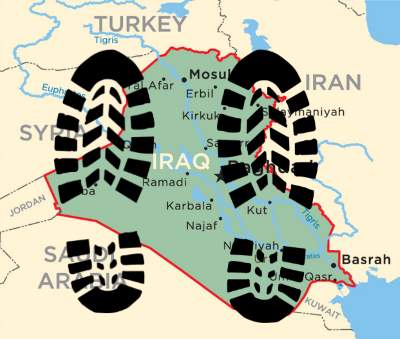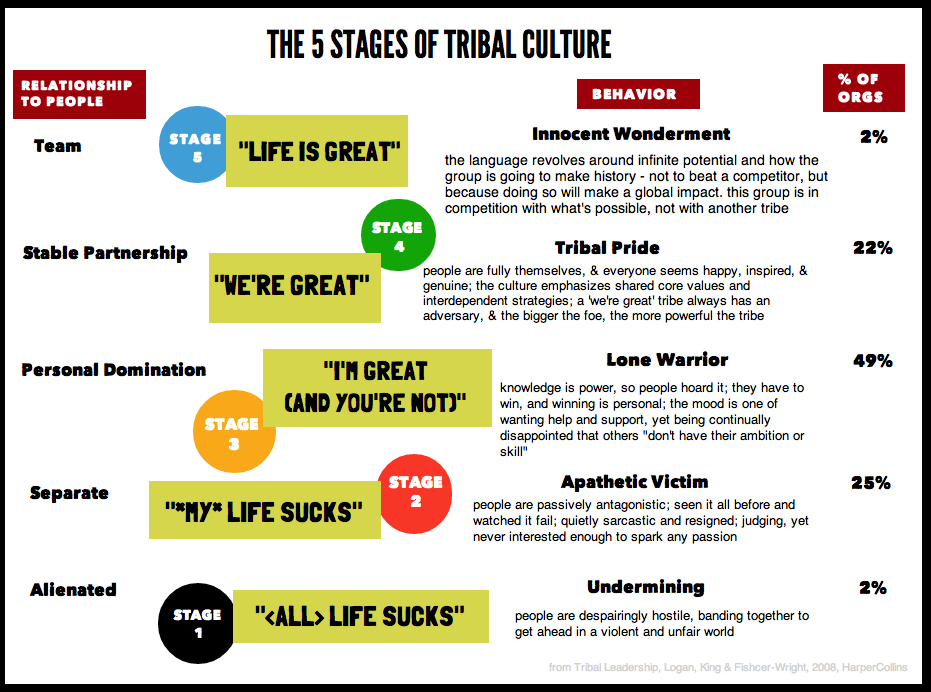 Maybe you've thought timesheet fraud was a victimless crime. Think again.
Maybe you've thought timesheet fraud was a victimless crime. Think again.
For all we spent and committed to the Iraq war -
- 1.5 million soldiers deployed over eight years
- Nearly 4,500 dead
- 32,000 wounded
- More than 300,000 with post traumatic stress and brain injuries
- More than 3 Trillion plus dollars on equipment, materials, and
- An ever-growing price tag in the billions to be spent providing care for soliders' permanent disabilities over the remainder of their lives
The stakes were about as high as they get.
The story starts with ISIS (The Islamic State), a terrorist group so heinous that they've been DISAVOWED by Al-Qaeda, the folks who brought us the Twin Towers and Pentagon attacks.
ISIS Domination of Northern Iraq Took One week
After an early victory in January 2014 when they seized Falluja’s government buildings, ISIS, seemingly out of nowhere, rolled over Northern Iraq in one week.

After these victories, ISIS attacked Samarra but were pushed back by local Shiite militias helping Iraqi army forces. They continued on to seize Jalawlaand and Sadiyah but then got pushed back with help from Kurdish forces. They continued south and took Ishaki and Dujail.
(http://www.nytimes.com/interactive/2014/06/12/world/middleeast/the-iraq-isis-conflict-in-maps-photos-and-video.html?_r=0)
As happened with Al-Qaeda and the Twin Towers and Pentagon attacks, ISIS was both condemned and strangely revered for there stunning victories. The news media sopped it up. ISIS was on a roll, they reported. Fresh off their major bank heist of a half billion dollars, they were shown with their stolen cache of powerful U.S. tanks and weapons. More video showed them in new sedans barreling through the desert at high speed, their flags and turbans flapping in the wind, guns held high. All of this was about as startling as the "Fall of China" to the communists in 1949.
But after all the news stories, no one asked much about who ISIS defeated.
It turns out the Iraqi Army was actually made up thousands of "ghost soldiers," that is, soldiers on the payroll but not anywhere near the battlefield.
Here's how it worked.
There were two types of ghost soldiers:
1. dead people placed on the Iraqi army payroll who would not have to be paid because they were not alive, and;
2. living people who Senior Iraqi officers sent home so they could pilfer most of their paychecks.
The Iraqi government announced that there were maybe 50,000 such ghost soldiers. This is the number the Prime Minister Al-badi was willing to admit. The fact is they do not know the full number. Some insiders estimate there could be hundreds of thousands of ghost solders. In fact, the force structure of the Iraqi army, 1,000,000 soldiers is also being called into question. That it might be more like 270,000. Hmmm.
Of course the non-ghost soldiers (real living Iraqi soldiers who remained to fight) knew about this fraud. By the time ISIS was bearing down on them, already demoralized, angry about the fraud, most said "Hell with this," and went home.
This is how the Iraqi Army evaporated into thin air.
Cost of Ghost Army Using Iraqi Government Estimates:
$750 x 50,000 = $37,500,00 per month
$450,000,000 (nearly half a billion) per year
But it gets worse.
Al-abadi said there were 50,000 ghost soldiers from a cursory investigation. He sarcastically went on to say deeper investigations would likely uncover “wonders and marvels.” The ghost payroll number could be 2, 3, 4, 5, 6 or maybe 7 times higher than the government will admit. Maybe there was not much of a standing army at all, just phony timesheets and payroll stubs. We might never know the full story.
GHOST POLICEMEN IN INTERIOR MINISTRY
Yet somehow, it gets even worse.
After taking cities and towns, ISIS made great news with beheadings and other atrocities through mass executions of civilians. All of this was done with little resistance and local law enforcement was nowhere to be found. It also turns out that the security and police forces might have had "ghost police." After the collapse of the Iraqi Army, local law enforcement were absent, probably for the same reasons as the ghost soldiers.
According to an Iraqi lawmaker Liqaa Wardi, “The numbers will be much higher if the investigation includes ghost policemen in the interior ministry,” He went on: “I think that the efforts exerted by the current government will face resistance by some corrupt army and security officers who have made gains and fortunes due to the corruption system and the ghost soldiers.”
How did all this happen?
There are some basic technical reasons. Beyond a culture of corruption and greed, there were no controls in place. For example, there was no formal time tracking or attendance tracking in place, no sign off procedure on payroll checks.
But why this happened is a more important question.
Profound Lessons from the Iraqi Army Timesheet Fraud Scandal
It appears that U.S. soldiers in Iraq fought with strong commitment to their mission, even when they had doubts about it privately. There is every evidence that the U.S. Army and Marines, on the whole, fought hard and with discipline. There is also every evidence that relatively few U.S. deserted the fight during Iraq to de
However, to be fair to the Iraqis, we should compare their performance to the U.S. and other militaries.
U.S. Military Rules on Desertion
Desertion is a problem in all wars. Often desertion is highly correlated with the "goodness" and "righteousness" of the mission, or lack thereof.
In the case of Soviet Afghan war, desertion of Soviet soldiers was an extreme problem. In many cases, these Soviet soldiers melted into Afghani tribes, learning the local Pashto language, converted to Islam and were never heard from again.
The Five Levels of Organizational Performance
So what exactly happened with the Iraqi Army?
And other than wagging our finger at them, what can they teach us?
Hang in for a few minutes while we put on our anthropologist hat.
This stuff gets pretty interesting.
A great book called Tribal Leadership by Dave Logan is based on a 10-year study 24,000 workers in more than 24 organizations in the world.
Logan defines a “tribe” as any group of 20 to 150 people who know each by name.
What binds them together is a common culture with a shared language and set of behaviors they use to get through the day.
“Tribal Leaders” are not just the guys in charge. In Logan’s analysis they should be the people in charge of "upgrading" a tribe’s culture.
Translation Please
So how does this translate into modern business speak?
In business, Tribal Leaders establish and try to improve upon the benchmarks of profitability, productivity, customer satisfaction, sales, employee retention, attracting talent and whatever is important to their business. Mostly, they work to bring employees to own and conduct themselves to perform better against these standards. Ultimately, if it goes well, according to Logan, a truly great company gets its people to talk, eat, breathe, sleep and embody these things so they and their organization live in greatness.
Greatness is level five.
Tribal Leadership’s job is to get people ‘unstuck’ or unblocked from unhelpful language and behaviors that keep them from getting to level five.
The Five Tribal Stages
A few definitions. Each successive stage, from one to five, is better and outperforms the previous one.
Stage One – ‘Life Sucks’
Most employees are socially alienated, they talk about being dealt a bad hand so you to do whatever you have to do to survive.
Stage Two – ‘My Life Sucks’
Just get by, show little initiative, and minor uses of passive-aggressive behavior to improve your lot.
Stage Three – ‘I’m Great (and you’re not)’ – (49% of organizations are here)
‘People engage in anything that’s going on, with energy and commitment, but when you listen closely, they talk mostly about themselves and focus on appearing smarter and better than others. They think they’re focused on team concerns, but their actions show their interest is personal. People tend to form two-person relationships, so if they manage of group of ten, they have ten relationships. They rarely bring people together, they resist sharing information except when it’s necessary, and they pride themselves on being better informed than others. Winning is all that matters, and winning is personal. People at this stage complain that they don’t have enough time or support and that the people around them aren’t as competent or as committed as they are.’
Stage Four – ‘We’re Great’
‘Teams are the norm, focused around shared values and a common purpose. Information moves freely throughout the group. People’s relationships are built on shared values. They tend to ask, “what’s the next right thing to do?” and to build ad hoc partnerships to accomplish what’s important at the moment. Their language focuses on “we,” not “me.” If two people get in a squabble, a third will step in and repair the relationship rather than create a personal following for himself. Unlike Stage Two, the group is composed of people who have played the Stage Three game and won – and are ready for genuine partnerships.’
Stage Five – ‘Life is Great’
‘Your tribes hardly ever refer to the competition, except to note how remarkable their own culture is by comparison, and how far their results outstrip industry norms. The theme of communication is limitless potential, bounded only by imagination and group commitment. People in this culture can find a way to work with almost anyone, provided their commitment to values is at the same intensity as their own. (Unlike Stage Four, the focus isn’t on “our values” but on resonant values.) There is almost no fear, stress, or workplace conflict. People talk as though the world is watching them, which may well be the case, as their results are making history.”
http://emergentbydesign.com/2012/06/28/a-step-by-step-guide-to-tribal-leadership-part-1-the-five-stages-of-tribal-culture/

You might already recognize your own organization in this analysis.
Most companies surveyed fall between stage two and four.
What’s most important about this study is that it can help you see where you are. As we know, whether it’s a twelve-step program or a family or friend’s intervention, learning and knowing what stage you are at is the first step to understanding how to become better and improve at anything.
And finally, back to the main story of this article, in this context you can identify the Iraqi Army as a Stage One organization:
- Feeling completely alienated
- Like they were dealt a bad hand, and
- Doing whatever they can to help themselves survive an utterly bad situation.
You can't diagnose the entirety of the Iraqi army from one article, but the fact that both officers and regular army personnel colluded to cheat a massive payroll system suggests that the Iraqi Army was operating at Level 1.
Patriotism gone. Self-interest and self-survival predominated. The organization and its mission was least important. Not where anyone wants to be in business.
Maybe tens, or even hundreds of thousands, did not show up for duty.
So what happened with the Iraqi Army?
- It lost any traditional sense of order, chain of command, rules or regulations.
- They did not benefit from the more modern concepts of teamwork.
- Organizational ethics as we know them broke down completely.
- Its corporate culture became completely corrupt, where leaders not only sign off on fraudulent timesheets and cheat payroll, but insisted upon it.
We may never learn what time tracking, attendance and reporting the Iraqi army has had, or if it existed at all.
In the U.S., in this day and age we take for granted a simple time tracking system (manual or electronic) where employees and their supervisors attest that they showed for their work hours. However, this practice is fundamental for the orderly operation of any organization.
In the end, your organization will probably never devolve into functioning like the Iraqi Army. However, basic verification of employee hours and attendance is critical so that they get their jobs done and your company remains competitive.
Making sure that your people are showing up when they are supposed to has you operating at stage two.
Having your people do most of the right things has you operating at stage three.
When your employees start to care more deeply about their mission and talk about it frequently, your organization is on a path to greatness.
At what stage is your organization?



